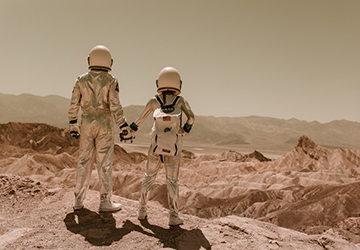For years, our world has revolved around technology. Every day, we see scientists inventing something new. Every passing day, we hear in podcasts or Media or read in newspapers what new things scientists have created to make our lives easy and comfortable. Besides these inventions, NASA is playing a huge role in crafting outer-space applications that aid astronauts traveling and staying in space.
In this article, we will learn about all the new technologies like satellite navigation, scratch-resistant material, artificial limbs, insulation, and many more. We will read deeply to understand how they work in space and how scientists are giving a new twist to this application in our daily use of products.
1.Satellite Navigation
Day by day, NASA is inventing things to make our lives more comfortable and easier than before. Although years back, when humans were not sent into space, NASA had created certain satellites that could communicate with humans on Earth. But they have made communication, driving, and other things easier with time. For instance, now we can make long-distance calls easily without lag, and we can drive anywhere in this world with the help of global navigation satellites rather than carrying worn-out papers like maps.

2.Scratch-Resistant Lenses
For the safety purpose of the astronauts, NASA has invented a particular type of coating that is used as a covering for the plastic lenses on helmets or other equipment. This special coating makes them scratch-resistant and prevents outer space dust particles from scratching or harming the person. This material is seen in everyday products like camera lenses, spectacles, etc.
3.Artificial Limbs
Besides all valuable inventions, NASA's worthful creation was creating prostheses for people with disabilities. While working on robotic limbs and other parts, scientists invented something to help people with missing parts.
But now, as we have entered the age of Artificial intelligence, scientists have developed more responsive body parts for humans with disabilities. With the help of AI, they have created different parts of the body, especially hands, that are controlled with the use of AI. Just like you think and your hand moves naturally, with the help of AI, you can do all activities just like a normal hand connected with the brain's response.
4.Cordless tools
Exploring the space is a challenging task, especially when it comes to collecting samples or evidence that proves the existence of life. Sometimes astronauts need a cord or switch to plug in their machinery while gathering any model, such as rocks. But as we know, it is impossible to have lines in outer space to plug in our drill; therefore, NASA invented a magnetic motor drill that has maximum battery life and helps you do your sample research easily.
5.Robots
Like other necessary inventions, scientist has also invented robots and AI to assist them in their space search, analysis, and data collection. Our future space work will likely be highly dependent on these two things. Robots are hoped to assist human astronaut teams in maintenance and repair. The reason to have hope for the robotics space future is that the International Space Station already has a robot named Robonaut 2 that assist scientist.
6.Smoke Detectors
As we know, the temperature and environment in space differ from Earth's environment. Moreover, there is no gravity in length, so when astronauts or visitors travel to play, they may encounter fire at some places due to high temperatures or several toxic gases at different levels. NASA has helped invent an adjustable fire alarm that works at different sensitivity levels to warn about this uncertain situation. These fire alarms are designed to prevent false alarms and differ entirely from the standard ones we use at home.

7.Kepler Telescope
It is right to say that although we have discovered outer space, we can still not reach its depths. To fulfill this desire, scientists are expected to invent some advanced technologies within a few years to help us explore the depths of the galaxy. The Kepler Telescope made some of this purpose possible by spotting millions of planets in our universe that may have traces of life.
8.Rover Technology
Now, exploring space has become more accessible in recent years. Space companies have been working on technological advancement; the most recent scientific achievement is "Rover Technology." This technology helps the space explorer to explore the area by remote control robots. This Rover technology helps enhance the mobility system used in space. This AI-driven enhancement provides solid wheels for the planet's surface and enables them to collect real-time data. These rovers are designed to study planetary geology and search for the signs that prove the existence of life on any planet.
9.Homes on Mars
Scientists are working on establishing colonies in outer space with 3D printing homes and artificial supplies. They have also predicted that 2030, they might find a cloud in an area that will be the water source. If humans plan to live on a red planet, they should know how to live off the Earth. They also intend to develop an artificial source of energy that will help them to grow vegetables and help them to spend an everyday life like on Earth.
10.Insulation
The temperature of the moon is exceptionally high to work with consistency. Considering this situation, NASA has developed certain insulating spacesuits to protect the astronauts from high temperatures. These materials are also used in protective clothes, homes, and other things.
Conclusion
We are hoping to have a better future with more advanced technologies. These emerging technologies, like communication, traveling, food products, and even home appliances, make typical human life more comfortable. It is believed that humans and scientists will soon rely upon robots and AI to assist them. Consequently, technology plays a significant role in every aspect, whether land or space.


